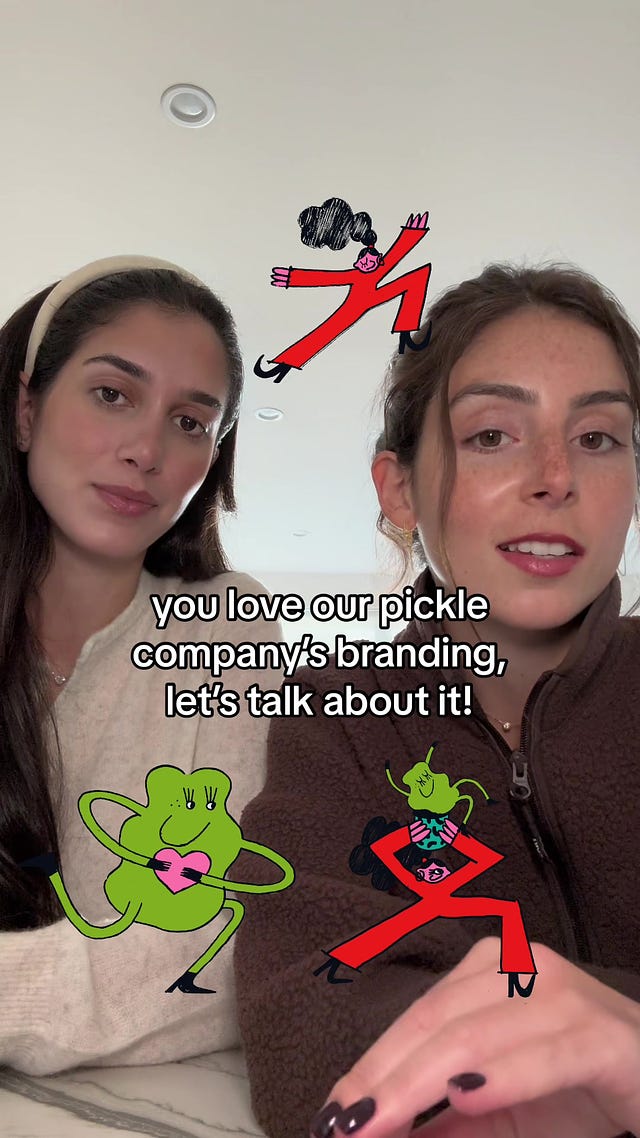Issue #12: When the business is the brand
What we can learn from Liquid Death's recent $1.4 billion valuation.
Hi everyone! Thanks for all the great feedback on my last issue. It’s good to know that we’re liking the Gen Z survey content, and I’ll definitely keep that in mind for future pieces. If any members of Gen Z in my audience are interested in participating in a panel or conversation, please hit reply and let me know 🙂
You might have heard that everyone’s favorite (mine included!) canned water brand Liquid Death was valued at $1.4 billion earlier this week, doubling its $700 million valuation from 2022. I’ve written a little about Liquid Death here before, but it’s no secret that they’re the brand world poster child for rule-breaking. Liquid Death is absolutely unafraid to take some risks on completely out-of-the-box social and marketing stunts, like their recent Super Bowl campaign. They ran an auction for ad space on the side of half a million Liquid Death cases, which would reach over 200 million people who walk through their retailers every week – reaching even more people than a real Super Bowl ad would. By having some fun and making some trouble, Liquid Death has successfully positioned its brand as cool, young, and daring since their launch in 2019. And with more and more people exploring low and no alcohol drinks, Liquid Death has made a major name for itself at a really good time in the drink market.
But the buzz around Liquid Death this week reminded me of what's so genius about the brand: they’re taking an entirely boring, basic product and building the most interesting, amazing brand around it. I mean, at the end of the day, all that they’re selling is canned water. It’s so elemental, so basic. And the Liquid Death brand alone is entirely responsible for that $1.4 billion valuation – the worth isn’t in the product so much as it is in the brand. Or maybe the product is the brand. It’s all of the qualities that a can of Liquid Death symbolizes and embodies for consumers: coolness, courage, sustainability, individuality, hotness, adventure, health, and so much more.
When I listened to the CEO of Liquid Death, Mike Cessario, on this recent episode of Uncensored CMO (which I highly highly recommend btw), he describes his experience working on Virgin America’s brand and researching Richard Branson’s strategy. Branson went into a stale category (airlines) and created a really cool brand. When Cessario decided to leave the agency world and create his own product, he asked himself the same question: What would be a really stale category that I could maybe create the one cool brand in?
It reminds me of several other brands I’ve seen popping up recently. A woman I went to high school with recently launched Hot Girl Pickles, and I’m really excited to see where it goes. The product is just pickles, but they’ve already got a great website and creative identity. They likely chose to invest more in building their brand over their product. The business just becomes about brand – not anything else (taste, sourcing, packaging, etc.). And as a lover of brand, of course I believe that investment is entirely valid and, in many cases, smart. The success of the business, however, largely depends on the space you’re building in. If you’re competing with a million other cool pickle brands out there, then it’s going to be a lot more challenging to succeed. You’ll probably need a killer brand and a killer product. But if you’re the first cool pickle brand, then you’re likely to crush it – just like Liquid Death has crushed the water category.
In fact, building a brand around a simple, basic product in a boring category is the best challenge ever. The easy thing to do is follow the trends and play into existing competition, like all the millions of celebrity-owned skincare and makeup brands that have popped up in the past two years are doing right now. But the challenge lies in operating outside of the pack. Liquid Death created the hype around regular old water, rather than chasing it. Competition is for losers. And brand competition has even more losers. Brand monopolization, on the other hand, is where the winners are at.
Like Mike says, building a brand in a stale category provides you with the opportunity to be the most interesting thing happening in the space, without having to compete with other brands trying to do other cool things alongside you. And if you’re lucky, you might just get to redefine the entire category – like Liquid Death is now doing for water. Like hi, Weird Water?? (Next Liquid Death campaign idea now loading…)
So what are some of the best spaces for brands to play? Let me know what you think in the comments. I’m keeping my ideas secret in case I decide to start a toilet paper company :)







If you start a toilet paper company, I’ll be your spokesperson!